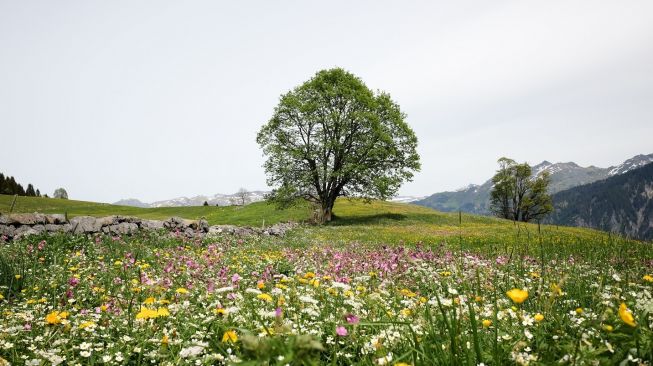<!–
Suara.com – Many living things on Earth have to adapt in the face climate change and other environmental shocks. If not, it will be endangered. Seems like flower around the world has changed color.
New research shows how flowers have adapted rapidly over the past 75 years, in response to rising temperatures and decreasing ozone by changing the ultraviolet (UV) pigment in their petals.
Reported in the journal Current Biology, scientists led by Clemson University, looked at more than 1,200 preserved plant specimens.
Counting 42 different species from three continents dating from 1941 to 2017. Experts analyzed the pigmentation levels of flowers using a UV sensitive camera.
The discoveries show that UV-absorbing flower pigmentation increased throughout the second half of the 20th century.
In fact, the level of petal UV pigmentation has increased globally by an average of 2 percent annually for the past seven decades. This is not a coincidence, the increase in pigment levels over the past few decades has also been closely reflected by increasing temperatures and decreasing ozone in the atmosphere.
Ozone is a gas found in the Earth’s stratosphere and absorbs very strong UV radiation from the Sun. Given that the total amount of ozone in Earth’s atmosphere has continued to decline since the 1970s, plants and other living things are exposed to more UV radiation.
Climate change also causes UV radiation to be more intense. Plants do need sunlight to grow, but just like human skin, too much UV radiation from the sun can damage it.
Pigments in these flowers are not visible to humans such as red rose petals or yellow lilies. Many pigments, including UV pigments, are invisible to the human eye, but are used by flowers to attract pollinators and protect against UV radiation.
Therefore, although the flowers may not look very different today to humans, they have undergone significant changes very rapidly, in an effort to adapt to their changing environment.
Not all flower petals are affected equally. First of all, plants that experienced a greater decrease in ozone showed a greater increase in pigmentation.
Second, plants with exposed pollen are also more likely to experience increased pigmentation because these parts are very sensitive to UV and high temperature pressure can make pollen infertile.
![CFC-11 is able to last for 50 years and inhibits the repair of the ozone hole [Shutterstock]](https://media.suara.com/pictures/653x366/2018/05/17/46067-lapisan-ozon.jpg)
Reporting from IFL Science, Thursday (1/10/2020), scientists warn that these pigment changes can have a big impact on the reproductive performance of plants because coloring is one of the main tools to attract pollinators.
The contrast between UV-absorbing and UV-reflecting petals may become dampened after these adaptations, making it more difficult for the plant to attract pollinators.
–


